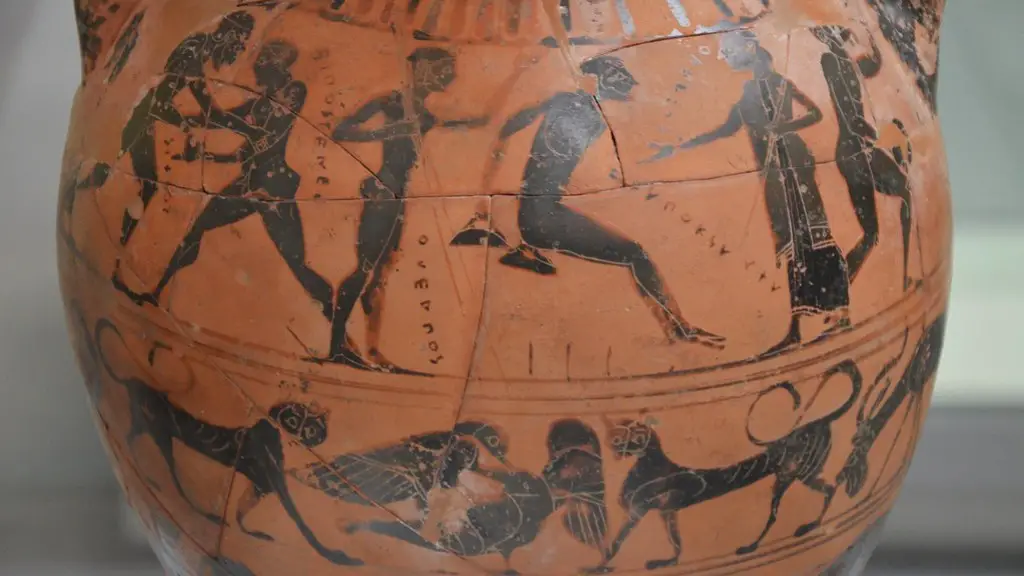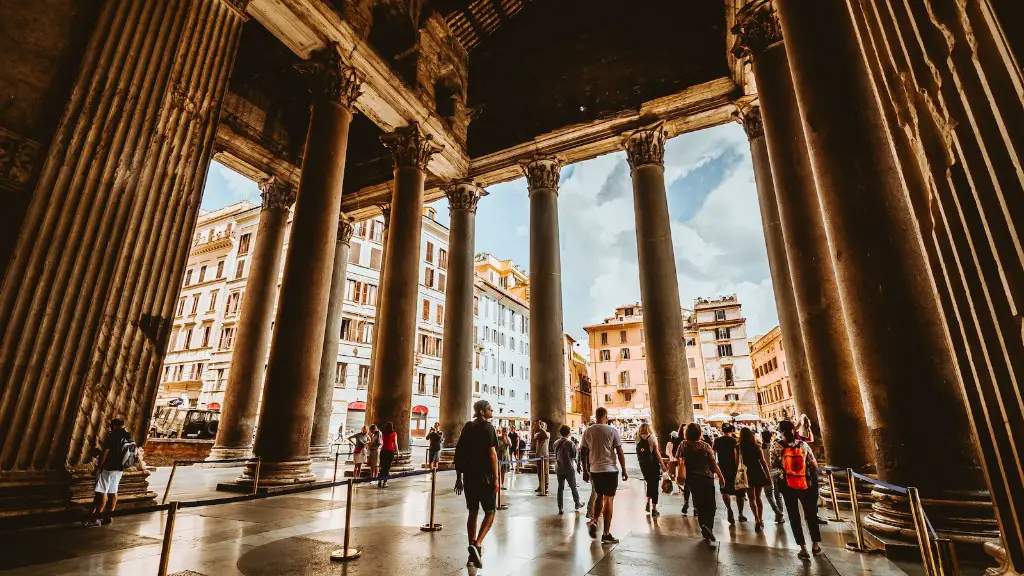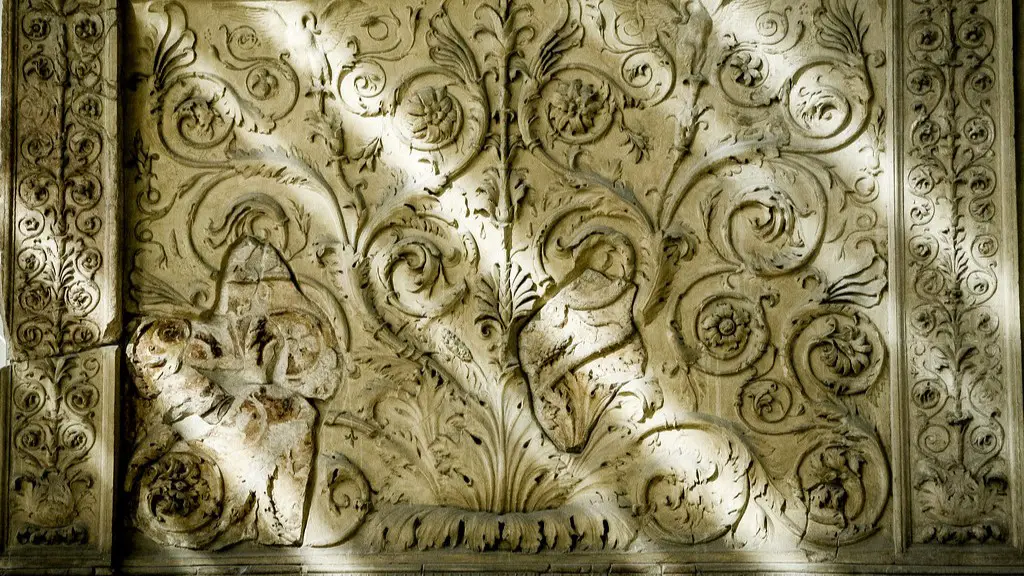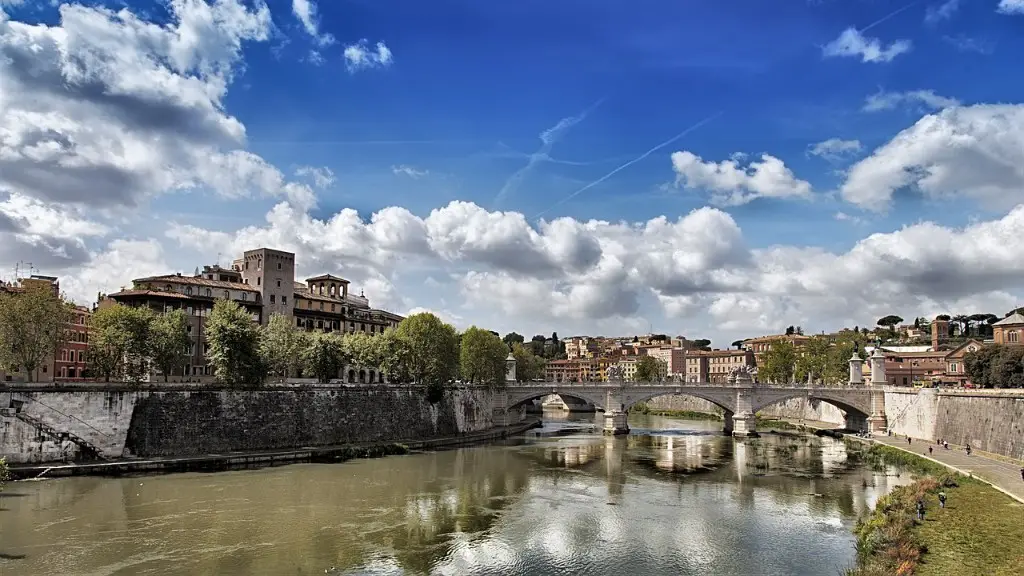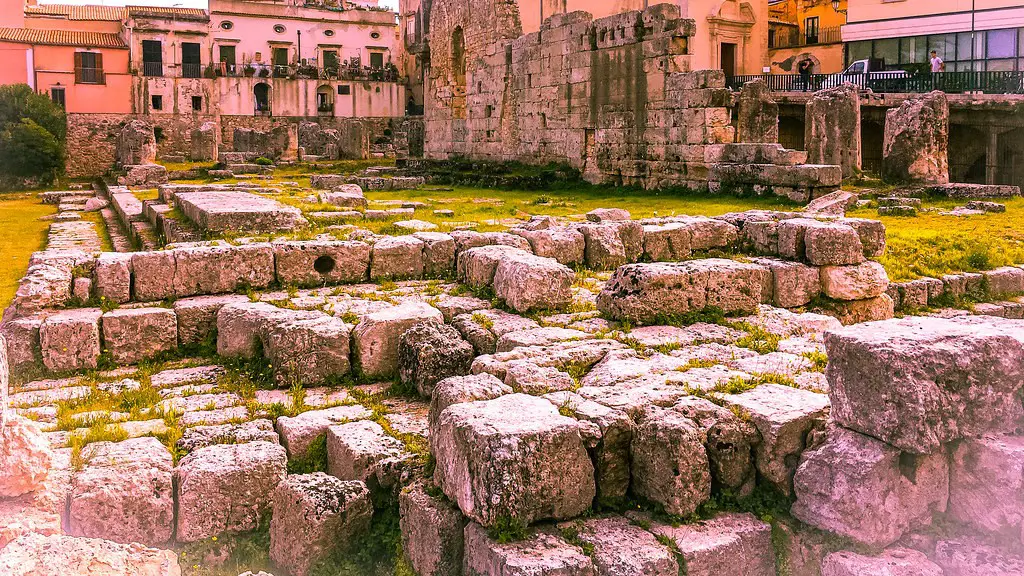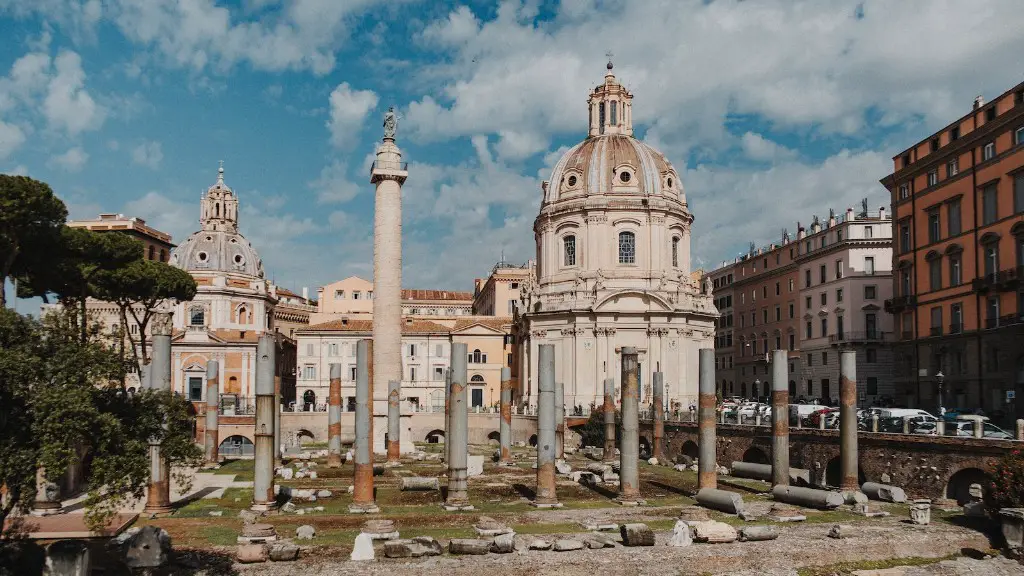Ancient Rome was a complex civilization with a history that can be traced back centuries. At its peak, Ancient Rome was ruled by an emperor, although the system of government was much more complex than this. This article will explore the system of government of Ancient Rome, as well as providing relevant background information and data to further contextualise this ancient civilization.
The Roman Republic (509 BC-27 BC) was the form of government used in Rome before the empire. The Republic was based on a trio of institutions; the Senate, the Assemblies and the Magistrates. The Senate is perhaps the best known of the three; this was the governing body and consisted of 300 members. It was a powerful body and had the power to pass laws which were binding upon the people of the Republic. The Assemblies were another governing body, consisting of the Plebeian Council and the Centuriate Assembly. It was through these two bodies that citizens had the opportunity to make their voice heard in Rome and were used for the passing of laws and for the election of magistrates.
The Magistrates were the third institution of the Roman Republic and were elected by citizens. It was the responsibility of these magistrates to ensure that the laws of the Republic were enforced. All Roman citizens were eligible to stand for election as a magistrate, and these positions were often used as a stepping-stone to a successful political career. This system worked well until the reign of Julius Caesar (49-44BC), who abolished the Republic and replaced it with the Roman Empire.
The Roman Empire (27BC-476AD) was a much different form of government to the Roman Republic and was based on the principles of absolute monarchy. The emperor, or ‘Princeps’, was the absolute ruler of Rome and was responsible for making all executive, judicial and legislative decisions. The emperor was also supported by a Senate, however this was no longer a governing body and instead provided an advisory role. The Senate was largely made up of wealthy, politically influential Roman families and provided the emperor with resources and advice.
The main governing body of the Roman Empire was the Praetorian Guard. This military body acted as an elite corps, responsible for ensuring that the emperor remained in power. They were also responsible for carrying out military campaigns, protecting the emperor and enforcing the emperor’s laws. As well as this, the Praetorian Prefect served as the chief minister of the Emperor, controlling the administrative and financial affairs of the Empire.
The Roman Empire was divided into several provinces, each of which was ruled by a governor appointed by the emperor. The provinces were subdivided further into districts or cities, each of which was governed by its own magistrate or council. This system of governors and magistrates gave the emperor a great deal of control over his territories and ensured that the emperor’s laws were enforced throughout the Empire.
The Roman government was also a bureaucratic system, with the various branches of government bureaucracy regulating the operations of the Empire. This included taxation, public works, trade, religious matters and even justice. The bureaucracy was divided into several departments, each of which was responsible for different aspects of government. Each department was led by a prefect, who was appointed by the emperor.
The system of government used in Ancient Rome was complex and far-reaching, with a variety of governing and administrative bodies. It is a system which has been described as one of the most successful and effective in European history and has shaped the way modern governments and political systems are structured today.
The Role of Slaves in Rome
Ancient Rome was an incredibly complex civilization and the system of government ran on an intricate network of different classes, all in control of different parts of the state. One of these classes was the slave class, who were made up of people who had been taken into captivity or who had been born into slavery. Slavery was an integral part of life in Ancient Rome, with slaves being used to perform tasks ranging from agricultural labour to household tasks. Slaves were also used in the Roman army and had an essential role in the day-to-day running of the state.
The institution of slavery was not exclusive to Rome, although the Romans were the first to use it as an integral part of their government. Slaves were considered an economic advantage, with their labour being used to create wealth and prosperity for the state. Slaves were often sent to work in mines, quarries and building projects, as well as being used for agricultural purposes. Slaves were also used for entertainment purposes, being forced to perform for the Roman citizens in arenas and theatres.
Despite this, slaves in Ancient Rome were still subject to some form of legal rights, with the Code of Justinian (534BC) stipulating that slaves must be treated in a humane fashion. Any mistreatment or abuse of a slave was severely punished by law. Slaves were given a modicum of protection under Roman law, however the institution of slavery itself was still oppressive and demeaning.
Slaves were not seen as equals in Rome, with Roman laws often excluding them from citizenship and economic opportunities. This meant that despite their legal rights, slaves were relegated to a second-class status where their rights were limited. Slaves in Rome endured extremely harsh conditions and were effectively reduced to the status of a commodity, to be bought and sold at the whim of their owners. Despite the legal rights given to slaves, they were still very much considered inferior to their Roman masters.
The Role of Religion in the Roman State
Religion was an important part of the Roman government and was used to support and legitimise the state. Religion was used as a tool by which the state could influence its citizens, ensuring loyalty and obedience to the emperor. Religion was used in many different ways, including organising festivals and celebrations to honour the gods, using religious symbols as propaganda and legitimising laws and decisions through divine sanction.
The emperor was typically viewed as being descended from the gods and was often worshipped as a deity. This ensured obedience and reverence from the citizens, who were taught to believe that the emperor’s power was divinely ordained. The emperor was also seen as the leader of the state religion, ordering the building of temples and the sacrifices made to the gods. The emperor was able to use his divine status to legitimise decisions and laws and to control the religious practices of the state.
Religion was also used as a tool to unify the different regions of the Empire under one banner. Through religious symbols and practices, the citizens of the Empire were able to identify as Roman and to feel a sense of allegiance to the state. Religion was essential to the unity of the Roman Empire, as citizens were able to see the emperor as their divine leader and to be united under the same gods, despite their varying backgrounds.
The state religion of Rome was incredibly influential and shaped the way the citizens lived their everyday lives. Citizens were required to comply with certain religious practices and could be punished for disregarding the laws of the gods. This ensured that any violation of the laws of the gods were taken seriously and were often punished in a severe manner. Even with the advances of Christianity, the state religion maintained a strong level of influence.
Political Institutions in Ancient Rome
The political institutions of the Roman Republic and Empire were highly organised and played a major role in the governance of the state. As well as the Senate, Assemblies and Magistrates discussed earlier, there were also several other influential institutions. One of the most important of these was the Curia, which was a body responsible for forming and debating laws, as well as providing advice to the Senate.
The Second Senate was also an important institution, being comprised of members of the Curia and the Senate. This body was responsible for proposing and debating laws and was often used as a means of compromise between the two governing bodies. Other influential political institutions included the Senate Council, which was responsible for advising the emperor and the Censors, who were responsible for looking after the financial matters of the state.
The political institutions of Rome played an essential role in its government, ensuring that the state was run in a smooth and orderly manner. These institutions provided a formal structure for the governance of the state, ensuring that laws and decisions were made in an authoritative and effective manner. This system was highly developed and was sophisticated enough to cope with the changing needs and requirements of the state.
The Roman Legion
The Roman Legion was an essential part of the Roman state, being responsible for its military operations. Its primary duty was to defend the borders and interests of the Empire, however it also had an important role in enforcing the laws of the state. The legion was made up of elite soldiers, each of whom had to be of Roman citizenship and was expected to fight to the death in defence of Rome.
The organisation and structure of the legion was highly efficient and effective, with its members each having a very specific role. The legion was divided into smaller cohorts, each of which was commanded by a centurion. This structure allowed the legion to move quickly and effectively on the battlefield, enabling it to achieve its objectives with military precision.
The legion was an incredibly important institution and was essential to the ongoing success of the Roman state. Its military prowess enabled the state to expand and maintain its influence, while its strict discipline ensured that the orders of the emperor were carried out in a timely and efficient manner. The legion was also responsible for protecting the citizens of the state, ensuring their safety and security.
The Role of Senate in Ancient Rome
The Senate was an instrumental part of the Roman government and played an important role in decisions of policy. The Senate was a body of elected officials, typically from the higher classes, and was responsible for debating and ratifying laws in Ancient Rome. All members of the Senate had to be over the age of 40 and had to be citizens of the state.
The Senate held a great deal of power, with the ability to ratify laws and the right to advise the emperor on important matters. The Senate was also able to pass decrees, which were binding upon the people of the Roman state. This gave the Senate a great deal of influence in the running of the state and allowed it to ensure that the emperor’s laws were enforced throughout the Empire.
The Senate also had an important role in foreign policy, being responsible for negotiating with foreign powers and for maintaining diplomatic relations. The Senate was also responsible for the organisation of military campaigns and for the appointment of governors to the various provinces of the Empire. All in all, the Senate was a powerful and influential institution which had an essential role in the governance of Ancient Rome.
The Decline of the Roman Empire
The Roman Empire began to decline in the 5th century, during the reign of Emperor Honorius. This period was marked by a period of political and social unrest, with the state teetering on the brink of collapse. This period was characterised by rampant political corruption and a lack of direction, which led to the weakening of the state and the eventual collapse of the Empire.
The decline of the Roman state was also accelerated by external factors, such as the invasions of the barbarian tribes. These invasions caused great destruction to the infrastructure of the state and led to the depletion of its resources. The weakened state was further weakened by financial mismanagement and the ravages of plague, which further reduced the population and depleted the state’s resources. Ultimately, these external forces were too much for the state to bear and resulted in its eventual collapse.
The fall of the Roman Empire was a complex process, which was accelerated by both internal and external factors. The political and social unrest, the financial mismanagement and the invasions of the barbarian tribes all contributed to its decline. Ultimately, these factors were too much for the state to bear and led to the eventual collapse of the Roman Empire.
